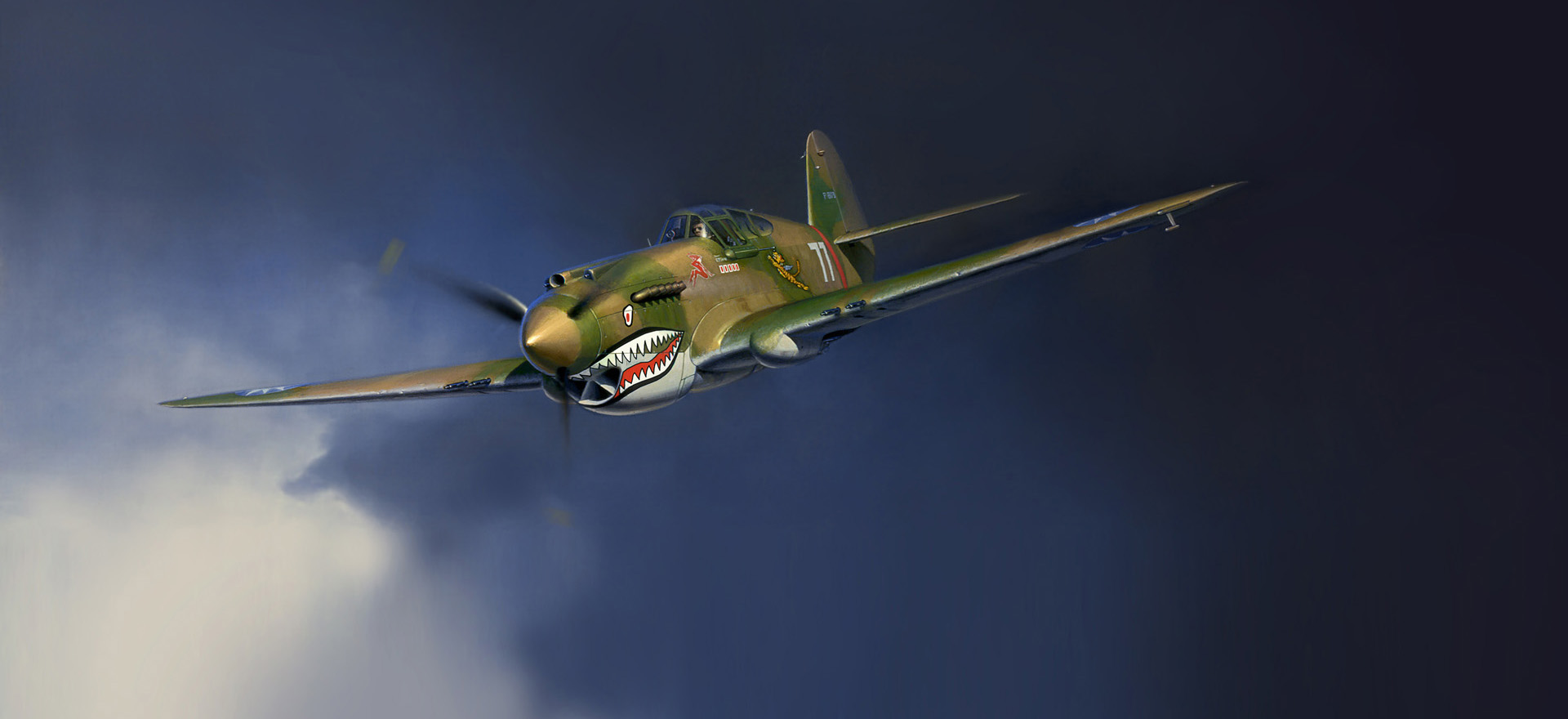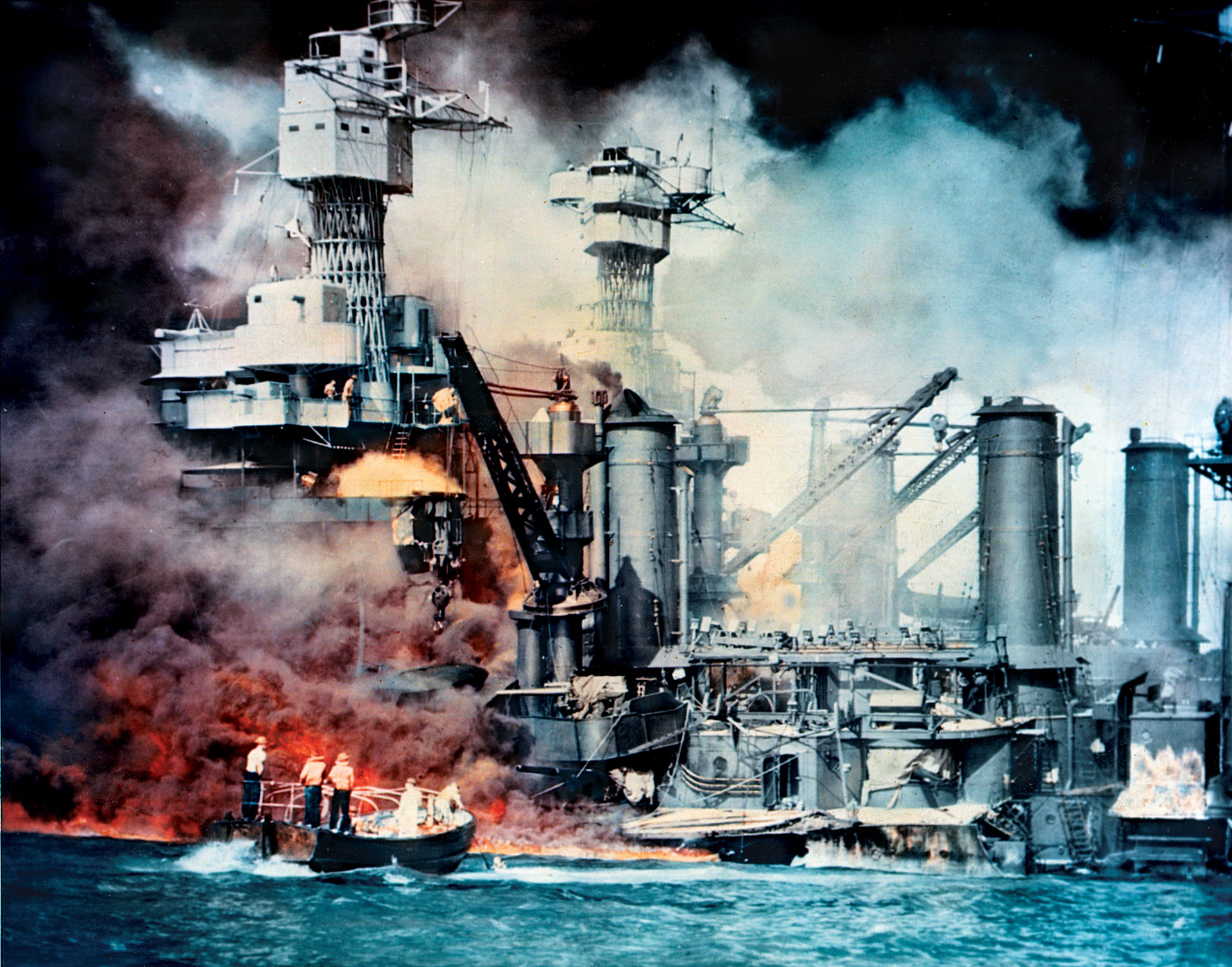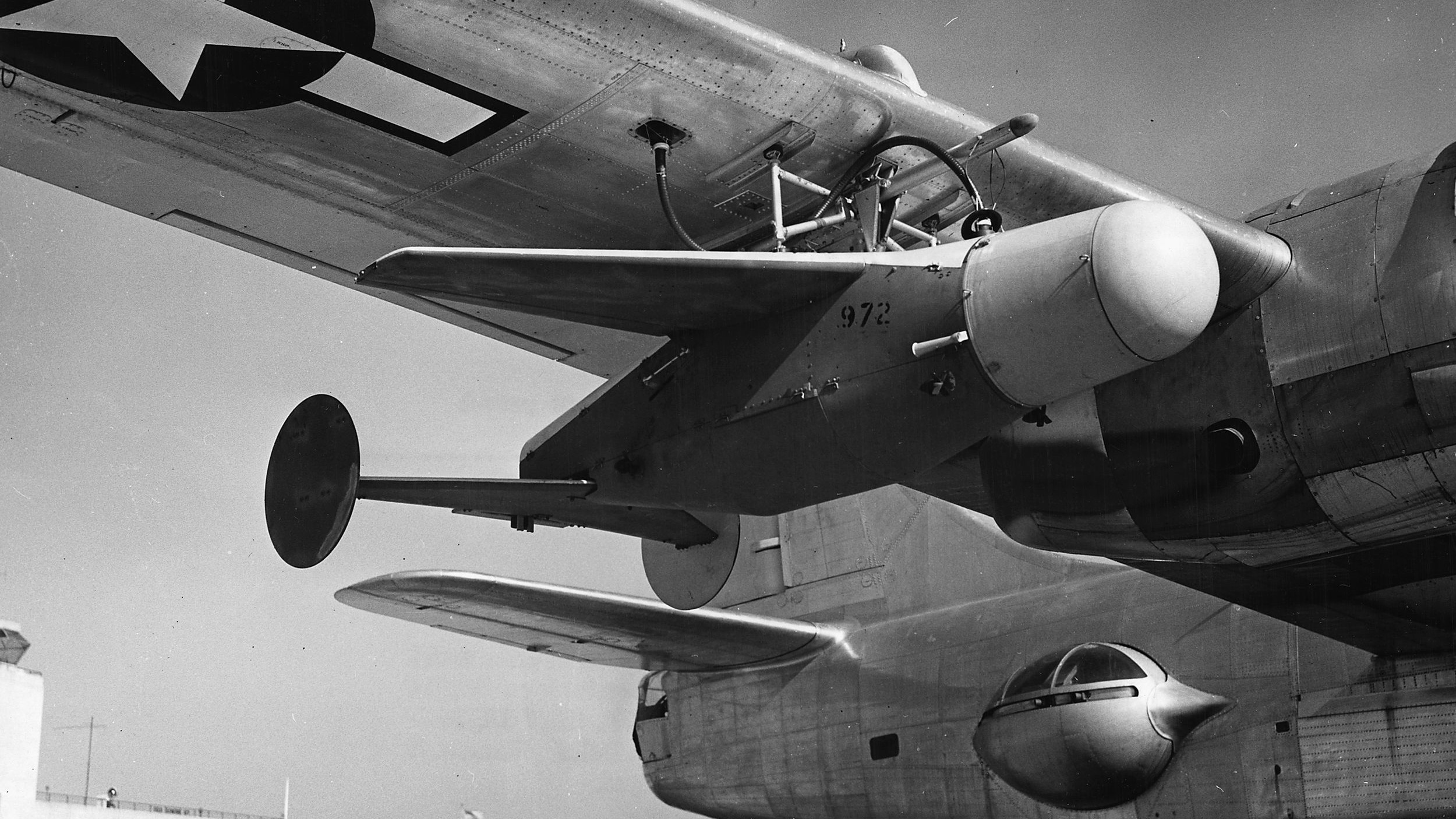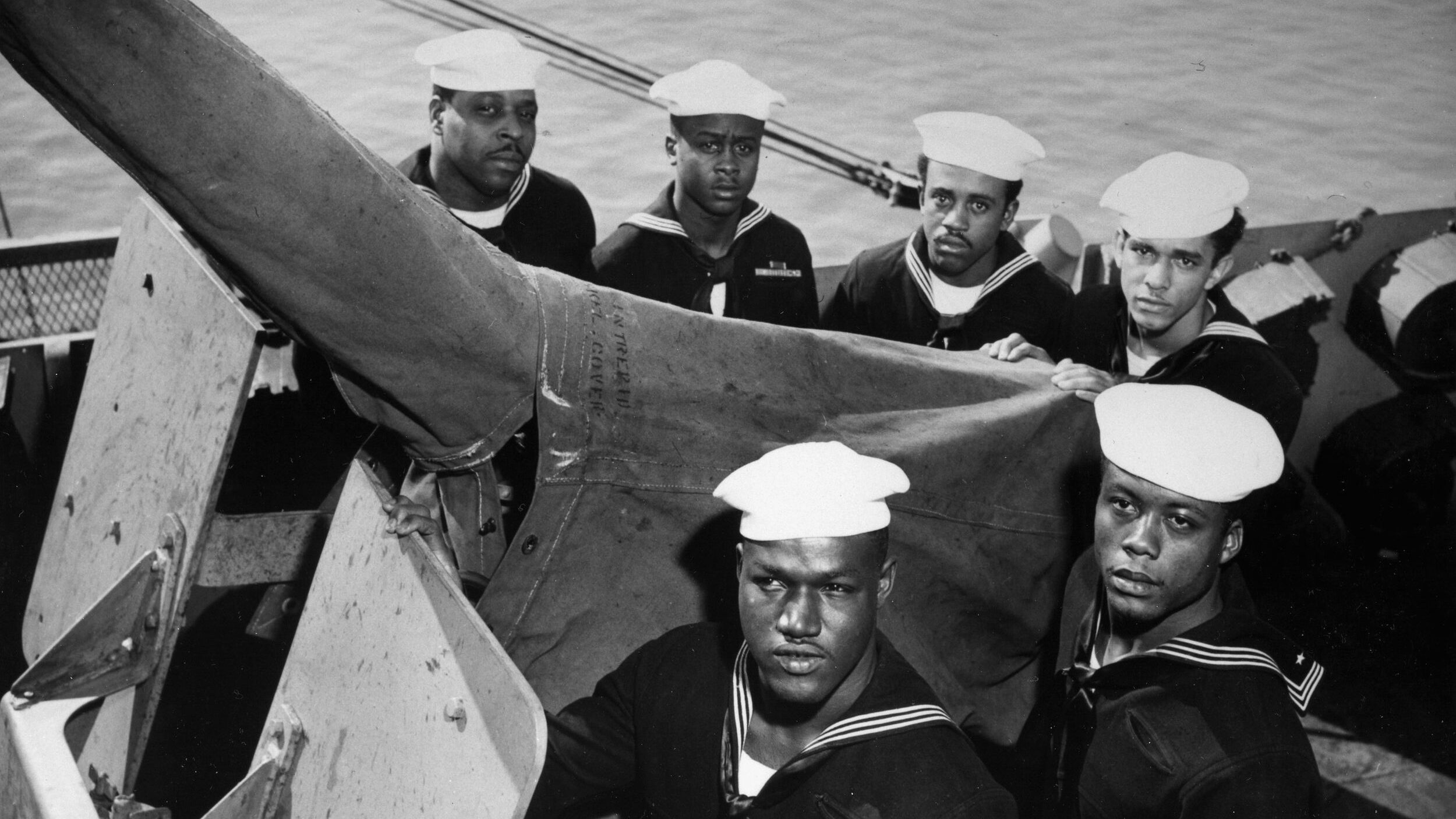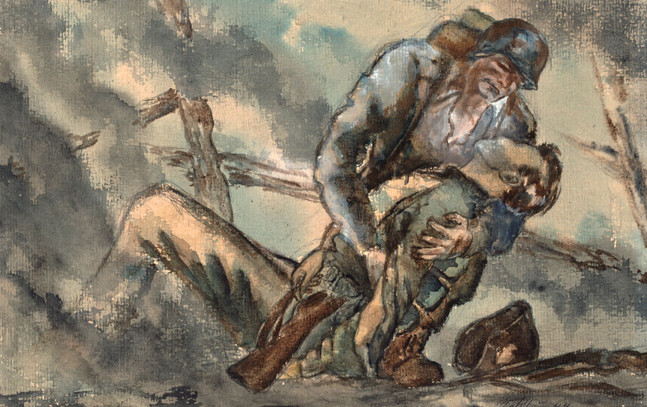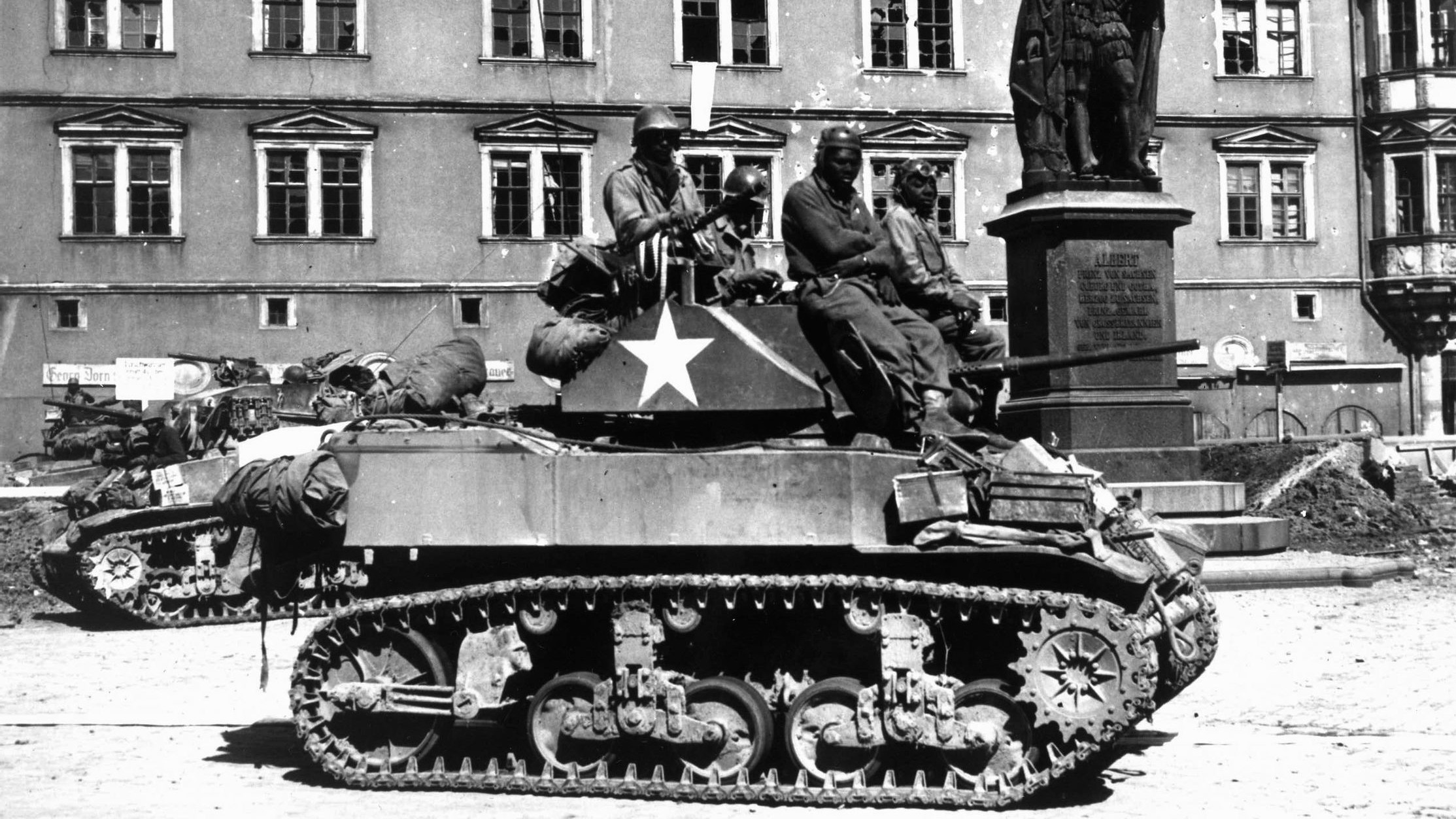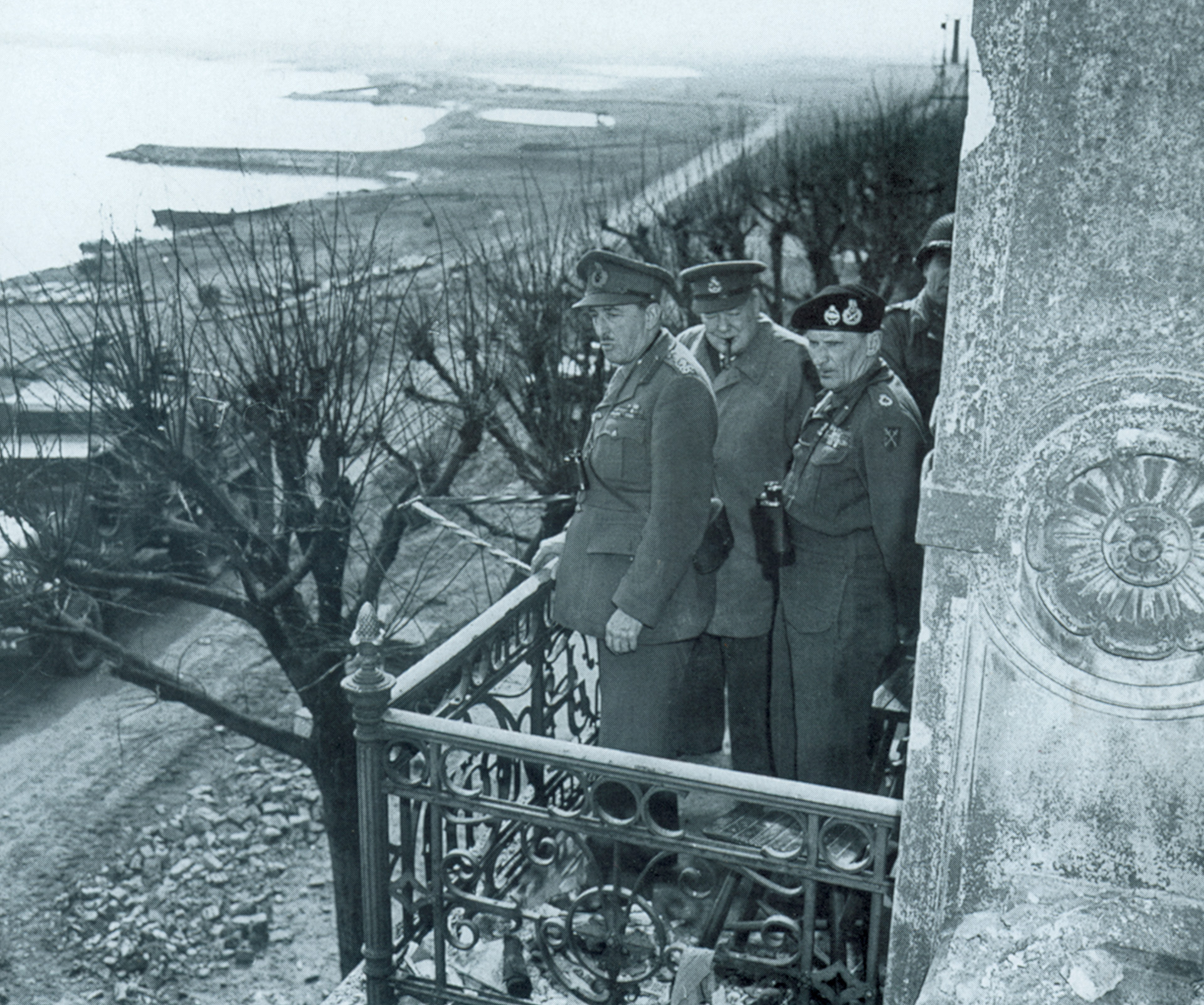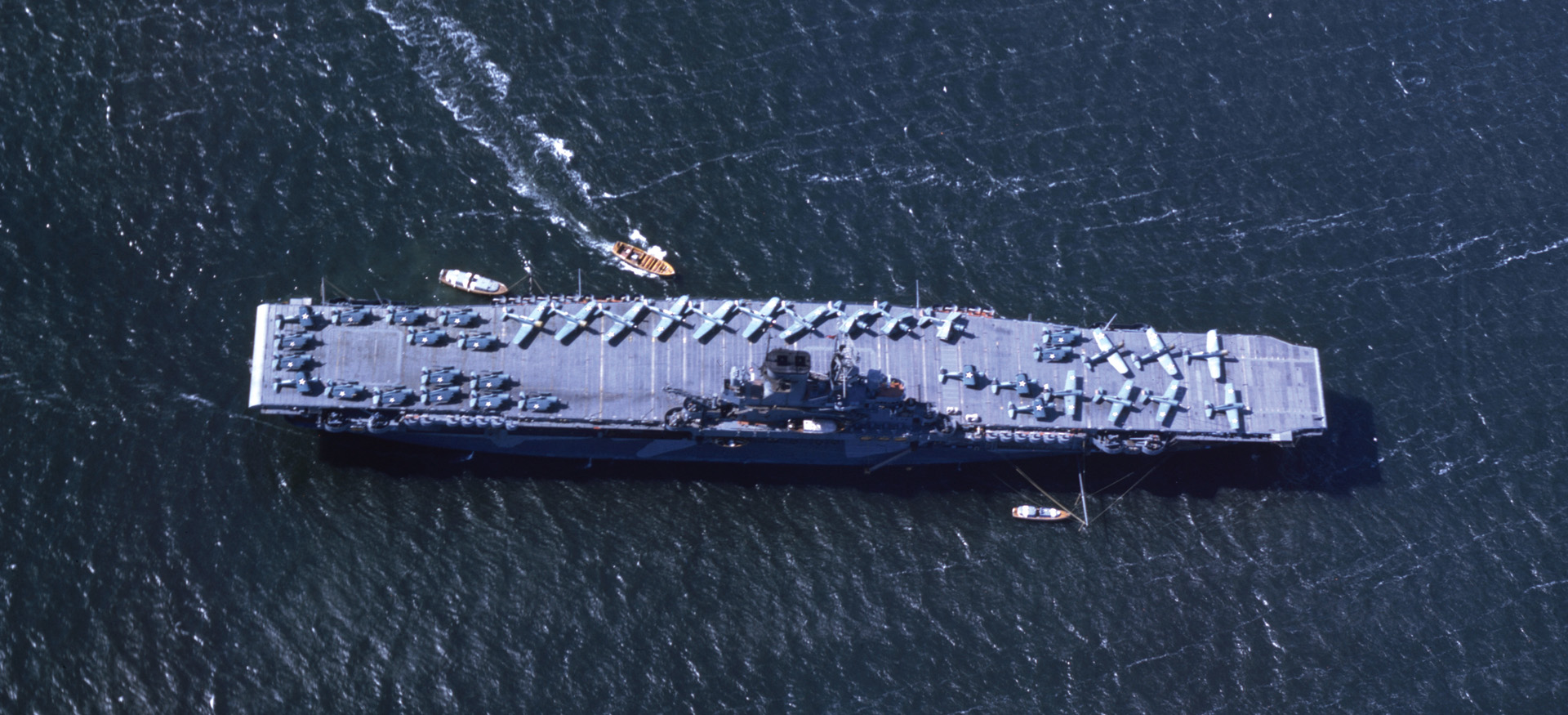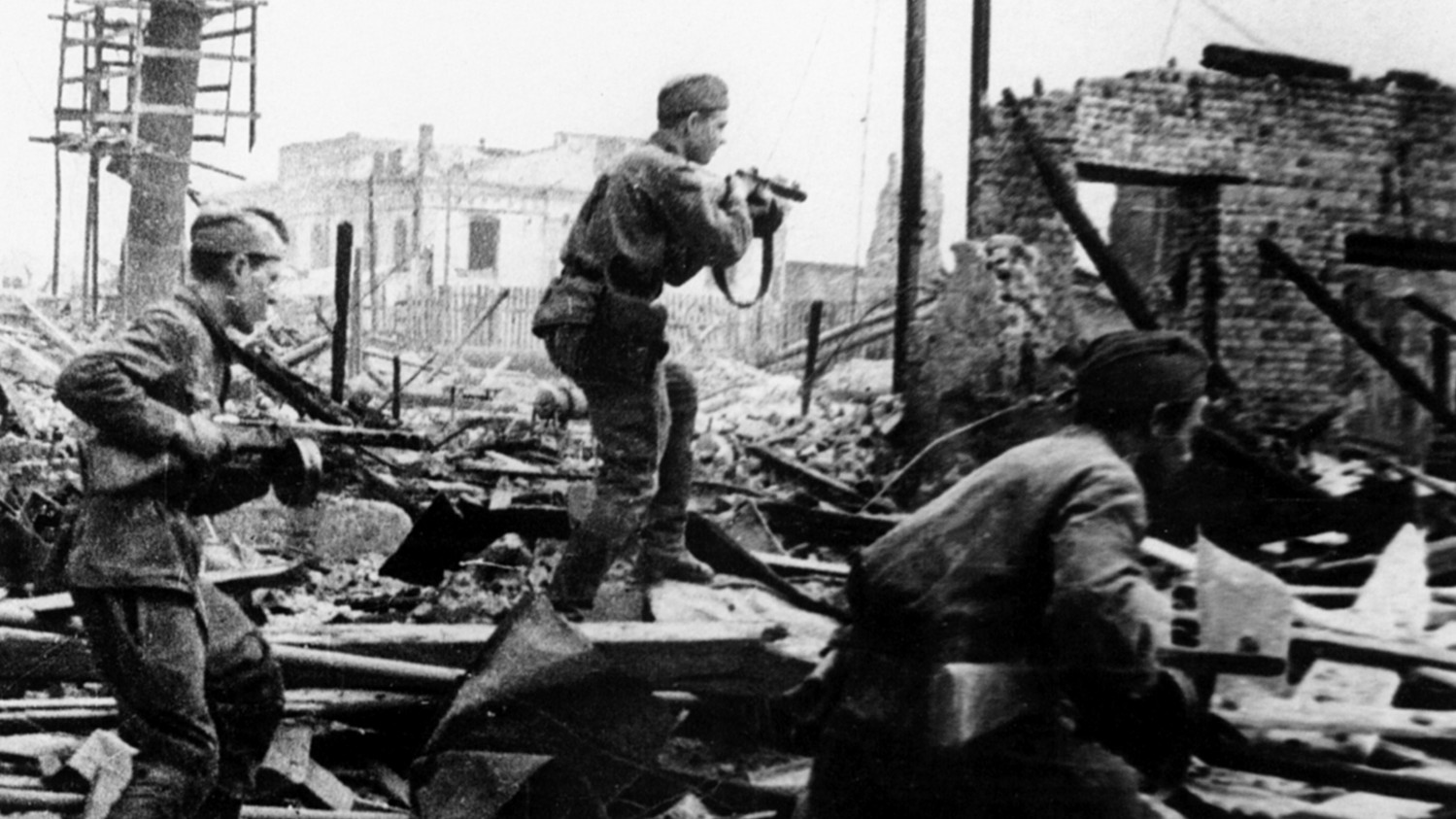by Bob Bergin
Erik Shilling, a pilot of the American Volunteer Group (AVG) Flying Tigers, faced the angry mob. There were about 30 of them, all in loincloths and leather vests with no buttons. Behind him was his airplane, or what was left of it. He had mushed into the trees, which had saved him but turned the craft into a heap of twisted metal. He had spent the night in the mangled cockpit, listening to strange sounds in the dark forest. With the dawn came the hill-tribe people.
The leader, an “exceptionally robust individual,” was hostile and seemed to be trying to incite the mob. He shouted to make sure Erik understood him, but it was not a language Erik had ever heard. The famous AVG blood chits had not yet been issued, and it struck Erik that although he was blond, these hill-tribe people thought he was a Japanese pilot, the only ones who flew in this sky. The thought terrified him. “Now I knew how the victims of a lynch mob must have felt,” he wrote later. But things eventually calmed down, and the tribal people busied themselves cutting limbs from trees to build a stockade around Erik and his airplane.
Left to himself, Erik poked through the wreckage. He found his windup Victrola and a stack of records, still miraculously intact. He played a few. The tribal people had never encountered anything like that. They gathered around the Victrola in wonder, sticking their hands into the horn to feel where the sound was coming from. The day wore on, and other tribal people appeared. Erik was expected to play something for each newcomer. Finally, he taught one of the tribal guys to do it.
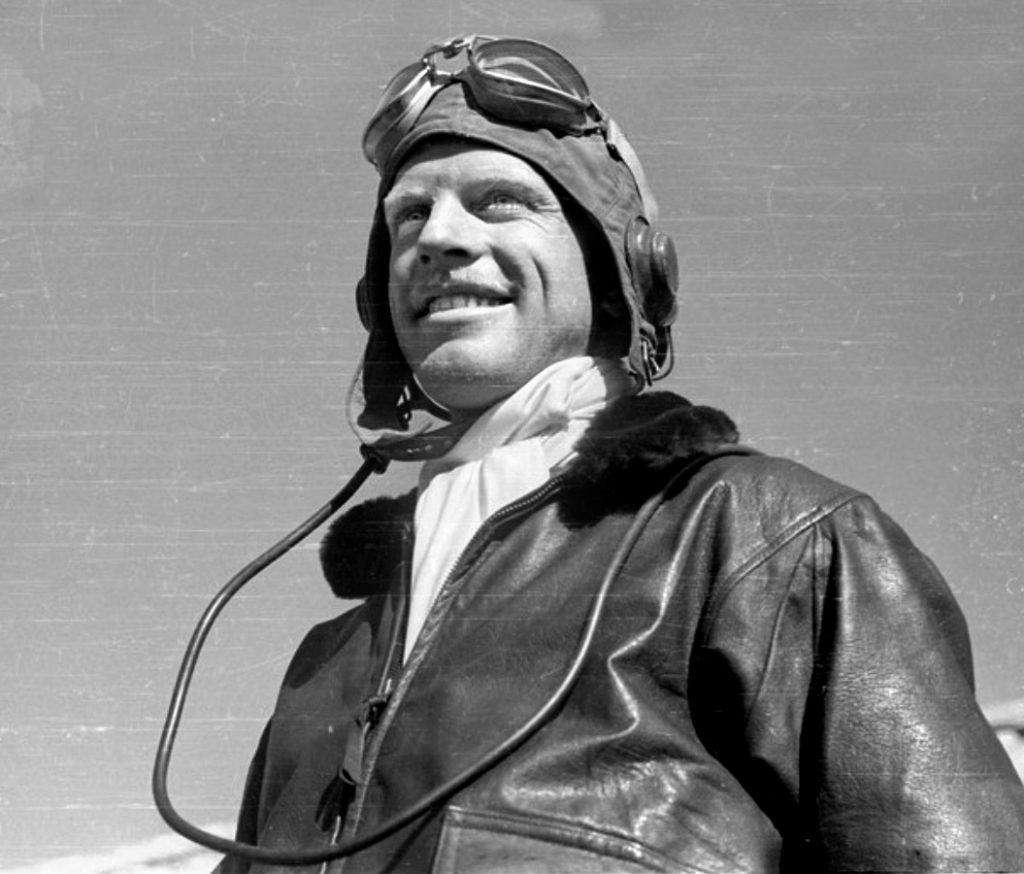
For the rest of that day the sound of music rose above a small clearing in the rugged mountains of China’s Yunnan Province, just a few minutes by airplane from AVG headquarters in Kunming. A favorite tune was “High On A Windy Hill,” although none of the listeners understood a word. It was Christmas Eve, 1941. Erik spent Christmas night with the wrecked aircraft, nicknamed the “Demon,” behind the stockade that the tribal people had built.
The beginnings of Erik Shilling’s improbable mountain adventure can be traced back some months earlier, when he first saw “a beautiful little fighter plane … the most beautiful airplane” he had ever seen. It was in Rangoon, Burma; Erik was visiting from the AVG’s training base at Toungoo in Central Burma. The beautiful little fighter was a Curtiss Wright CW-21. It was called the Demon. It had a 1,000-horsepower radial engine and a two-stage supercharger, and it was less than half the weight of an AVG P-40 Tomahawk. Its rate of climb was phenomenal, somewhere around 5,000 feet a minute—twice that of a P-40.
There were actually three Demons at Rangoon. They belonged to CAMCO, The Central Aircraft Manufacturing Company, which had a factory that assembled American aircraft for China. It also was used as the cover for the AVG as the ostensible employer of the AVG pilots and other AVG personnel. The three Demons had been sent to Burma intact and were to serve as prototypes when the CAMCO factory assembled 33 Demons for the Chinese government. Erik immediately contacted one of the CAMCO people he knew to see if he could fly the CW-21. That could be arranged, he was told.
The CW-21 “handled like a dream,” Erik recalled, “The most impressive airplane I had ever been in.” He couldn’t wait to get back to Toungoo to speak to AVG commander General Claire Chennault. The AVG needed those airplanes, Eric told him, and Chennault should get the Chinese government to buy them for the AVG. They would be able to intercept the high-flying Japanese reconnaissance airplanes that flew their missions above 25,000 feet and easily evaded interception by the AVG’s Tomahawks. The P-40 took 35 minutes to get that high; the Demon could do it in a little over six minutes. Chennault didn’t seem to share Erik’s enthusiasm.
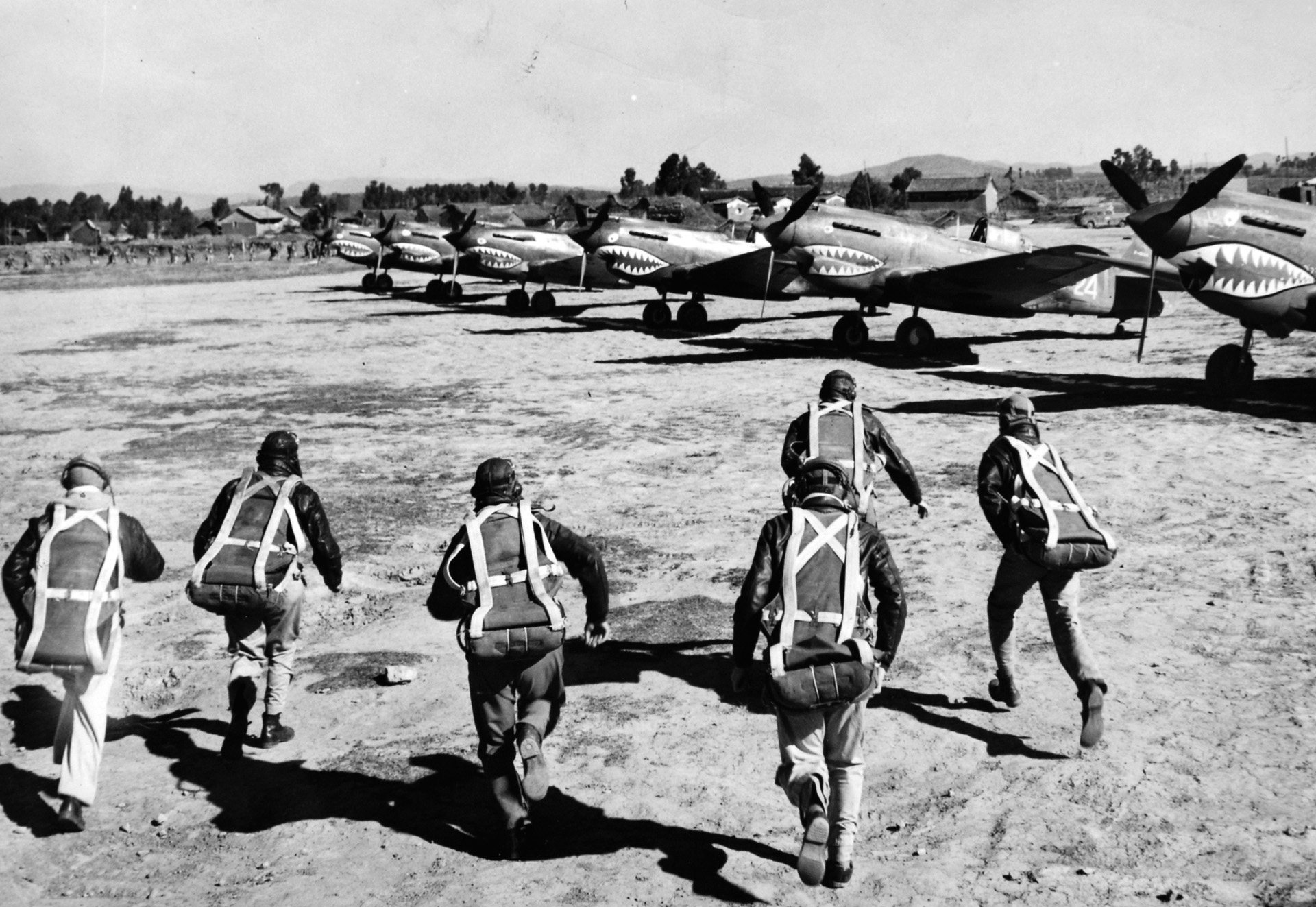
Volunteer Group, famously known as the Flying Tigers, rushing toward their waiting P-40 fighter planes.
The AVG had recruited a mixed bag of pilots with varying degrees of skill. There were bomber pilots and flying-boat pilots among them, and fewer than 20 of the AVG pilots had ever flown a P-40. Most had seen the P-40 only in photos. The AVG’s accident rate on training flights at Toungoo was high; three pilots had already been killed.
Erik had come to the AVG from the Army Air Corps. During World War I, his father had joined the aviation branch of the Signal Corps, entered flight training, and continued flying in the reserve after the war. He was a barnstormer in his free time, and young Erik nailed signs to trees, hawked soda pop, and kept dad’s Waco biplane clean. In 1937, Erik joined the Flying Cadet Detachment at Randolph Field, Texas. His assignments after graduation as a pursuit pilot were varied. He flew everything from the Boeing P-12 pursuit plane to the strange Bell YFM-1 Airacuda and the Douglas B-18 bomber, virtually “every airplane in the Army Air Corps inventory,” he remembered. Significantly for Chennault and the AVG, Erik had considerable hours in the Curtiss P-36 and P-37, forerunners to the P-40, and had served in the 41st Long Range Reconnaissance, a photo recon outfit. But Erik had never met the P-40 before.
When time for his first P-40 flight came, everybody was watching, including Chennault. It all went smoothly until Erik leveled off at 10,000 feet, when all hell broke loose. Smoke poured from underneath the cowling, and the engine started to shake itself apart. Erik learned later that the engine had thrown a connecting rod—right out the side of the crankcase. He shut down the engine and made a diving, 180-degree turn for the field. His touchdown was smooth, and he had enough momentum to turn down a taxiway and coast up to the door of the maintenance hangar. The mechanics loved it. Erik had to be “the hottest pilot in the outfit,” they said. Chennault didn’t say anything, but it was Erik he chose not long afterward to dogfight a Brewster Buffalo. Erik was certain that he was chosen because Chennault had watched his first P-40 flight.
Held on November 20, 1941, the P-40 versus Buffalo fly-off turned into a festive occasion at Toungoo. A British Royal Air Force (RAF) Battle of Britain ace was selected to fly the Buffalo, and several high-ranking British officers, including an air vice marshal, came up to witness the contest. The AVG performed an aerial review in their honor.
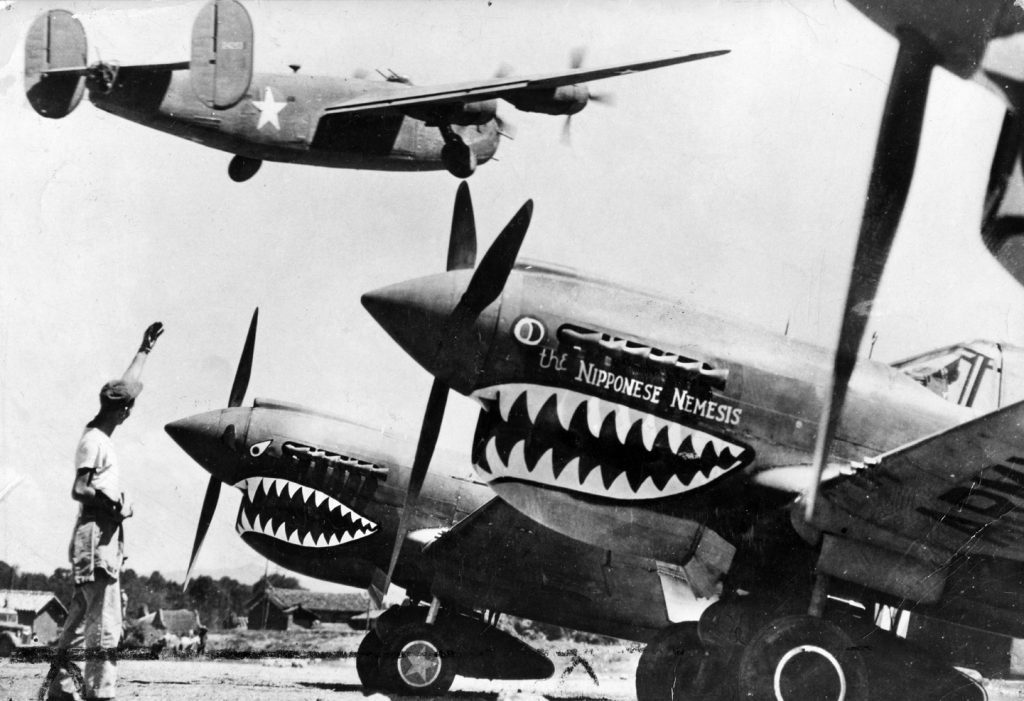
The fly-off came about because the AVG pilots had arrived in Burma with little regard for the P-40 airplane that they would soon fly in combat. In his memoir, Way of a Fighter, Chennault writes, “The P-40 had acquired a reputation as a killer in the hands of relatively inexperienced pilots.” What the AVG pilots knew about the P-40 before they ever flew one, he continued, “was based almost entirely on the crop of rumors then sprouting at military flying fields [back in the U.S.] on the erratic flying qualities, hot landing speeds, and inferior power plant of the P-40.” On their way to Burma, the ships transporting AVG personnel called at Surabaya, Singapore, and Rangoon, where the pilots saw that both the Dutch and the British were flying the American-made Brewster Buffalo.
The pilots “muttered darkly,” Chennault wrote, “that ‘it was a hellava note’ that the Americans had to fight in second-rate planes because all the best were going to the British and Dutch under lend-lease.’” Chennault believed that the “Buffalo was inferior to the P-40 in every respect,” and history would show how right he was. But at the time, even Erik Shilling thought that Chennault was taking a wild gamble by staging this exhibition.
In the end, as fellow AVG pilot Charlie Bond said: “Shilling whipped him soundly.” The two pilots met at 10,000 feet over the AVG’s Kyedaw airfield. They started with a series of turns, and Shilling quickly locked on the Buffalo’s tail. In desperation, the RAF pilot dropped his gear and flaps, hoping the P-40 would overrun him. Shilling saw the flaps starting down and pulled back on his stick instead of cutting power. That kept him above and behind the Buffalo, in position to counter any move the RAF pilot could make. There was nothing more the RAF ace pilot could do. “Much to everybody’s astonishment,” Chennault wrote, “Shilling flew rings around his opponent.” And “P-40 stock rose.”
Shilling had already made himself quite useful to the AVG in other ways. As the Group’s photo officer, he was in charge of converting one of the P-40s into a photoreconnaissance airplane. Erik chose P-40 Number 53, an aircraft he had flown and knew well. To lighten Number 53 and improve its performance, he removed the four 30-caliber wing guns, leaving the two 50-caliber guns in the nose. All the gaps on the exterior metalwork were sealed with fabric and covered with a dozen coats of dope. He also installed a small air scoop over a fuel vent to prevent the vapor lock at high altitudes that the P-40 was prone to (later adopted by Curtiss as a permanent fix in P-40 E-model). An aerial camera acquired from the RAF was installed in the baggage compartment and linked to a panel in the cockpit where it could be controlled remotely. Pictures were taken through an eight-inch hole cut in the belly. By Chennault’s reckoning, cleaning up Number 53 and reducing its weight had made it 18 miles per hour faster than the other AVG P-40s and let it climb 3,000 feet higher.
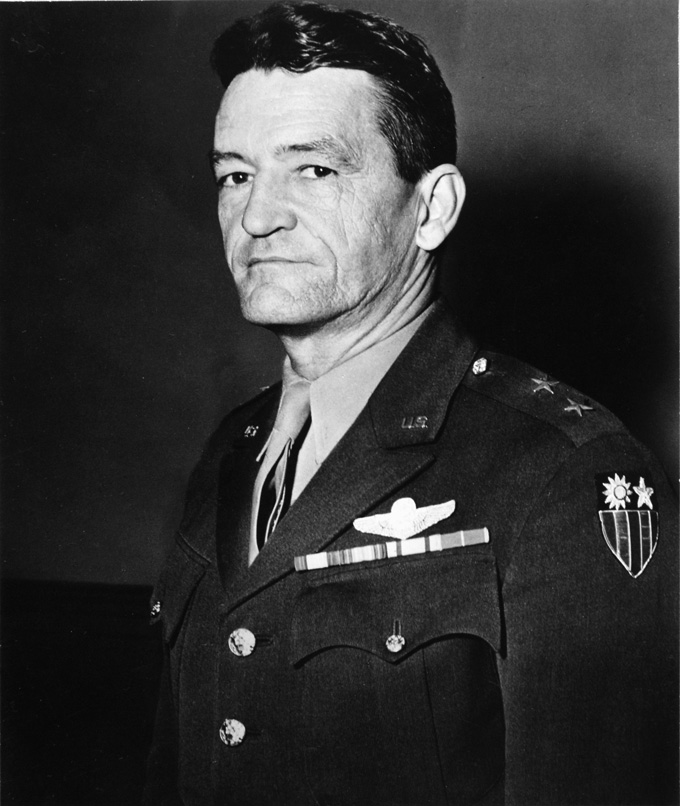
P-40 Number 53 had another claim to fame: It apparently was the first AVG P-40 to be given its teeth. At about the same time that AVG pilot Charlie Bond found a photo of a British P-40 with shark teeth painted on it, Shilling found a copy of the rotogravure section of The Statesman, a Rangoon newspaper. It had a photo of a German Messerschmitt Me-110 with a shark’s mouth painted on its nose. The next morning Shilling used chalk to sketch a shark’s mouth on the nose of Number 53, the aircraft assigned to him at that time. Chennault walked out to the flight line to look at it. Shilling wanted to use the shark mouth as the AVG Second Squadron insignia, but Chennault said he would rather use it as a group insignia on all the AVG aircraft. It wasn’t long before all the AVG P-40s had teeth.
Shilling was in Rangoon when the Japanese attacked Pearl Harbor. He flew to Toungoo as soon as he heard, “using max allowable power all the way.” Soon after Shilling landed, Chennault summoned him, Ed Rector and Bert Christman. He told them that the Japanese would attempt to neutralize the RAF at Rangoon and the AVG at Toungoo. He said, “We have to know what we will be up against.” Photographs of Bangkok and nearby Don Muang airfield were urgently needed. Shilling would fly the photo ship; Rector and Christman would fly escort.
The three pilots planned their mission. The 850-mile round trip from Rangoon to Bangkok was beyond the range of their P-40s. They decided to refuel on the way to Bangkok at Tavoy, an RAF airfield south of Rangoon and just 160 miles from Bangkok. On their way back, the Japanese might be waiting for them. The decision was the right one: Tavoy was bombed and strafed 20 minutes after Shilling and his escorts took off. This would be the first AVG mission against the Japanese and was probably the first American photo mission of the war over Japanese-held territory.
On the morning of December 10, 1941, Shilling and his escorts flew to Rangoon, and from there on to Tavoy. With Bangkok only 160 miles away, they had to start their climb immediately after takeoff to get to their mission altitude of 26,000 feet while still 50 miles from Bangkok. Rector led the first leg. When they reached 26,000 feet, Erik took the lead. They made their pass over Bangkok and Don Muang without incident, and Erik set a direct course for Rangoon over the Gulf of Martaban. Because of the “cleanliness” of Number 53, he had to throttle back to let the two P-40 escorts keep up.
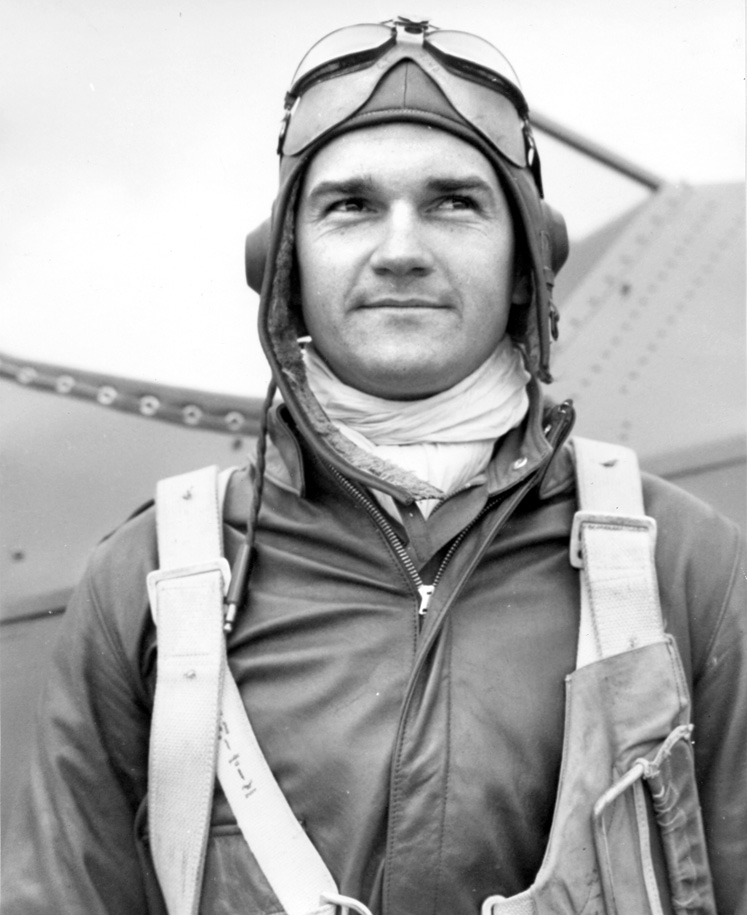
The photographs Shilling brought back were telling. Chennault looked at them and exploded. He had been denied bombers by the U.S. War Department and could do nothing about what he was seeing, as he explained, “Docks along the Menam river were jammed with enemy transports disgorging troops and supplies. Don Maung [sic] airdrome outside the city was packed with Japanese aircraft, parked wingtip to wingtip…. A dozen bombers could have wrecked the Japanese air offensive in twenty minutes. This was but one of many times during the war when a kingdom was lost for want of a few planes.”
On December 12, Chennault sent the AVG Third Squadron to Rangoon to support the RAF defense there. Shilling went with them. Over the next few days there were frequent alerts, which Shilling flew without meeting the enemy. Those may have been false alarms, but it was evident that Japanese attacks on the city were imminent. On December 22, a radio message from Chennault ordered the three CW-21 Demons be flown from Rangoon to Kunming as soon as possible.
Orders were cut directing Shilling, Kenneth T. Merrit, and Lacy H. Mangleburg to proceed to Kunming with a stop at Toungoo for minor maintenance. In fact, the CW-21s were just as they had come from their shipping crates. At Toungoo, long-range ferry tanks were to be fitted to their wings and radios installed. The three CW-21s departed Rangoon late that day, arriving at Toungoo before dark. Shilling’s two wingmen, Merrit and Mangleburg, had come to Burma on the ship with Shilling, and the three had become close friends. Shilling’s enthusiasm for the CW-21 Demon had spilled over to them.
Before landing at Toungoo, the three Demons put on an air show to the delight of the ground crew, who had never seen the CW-21s before. The mechanics went to work on the Demons, and the three pilots went to their barracks, where they had lived since arriving in Burma. Because their move to Kunming was likely to be a permanent one, they collected their personal belongings. Shilling couldn’t resist taking his Victrola and record collection. The next day, as the three pilots walked toward their aircraft, someone shouted: “The Japs are bombing Rangoon!” It was the beginning of the Japanese Christmas offensive. It was also likely that the Japanese would hit AVG targets, and Toungoo was a prime choice.
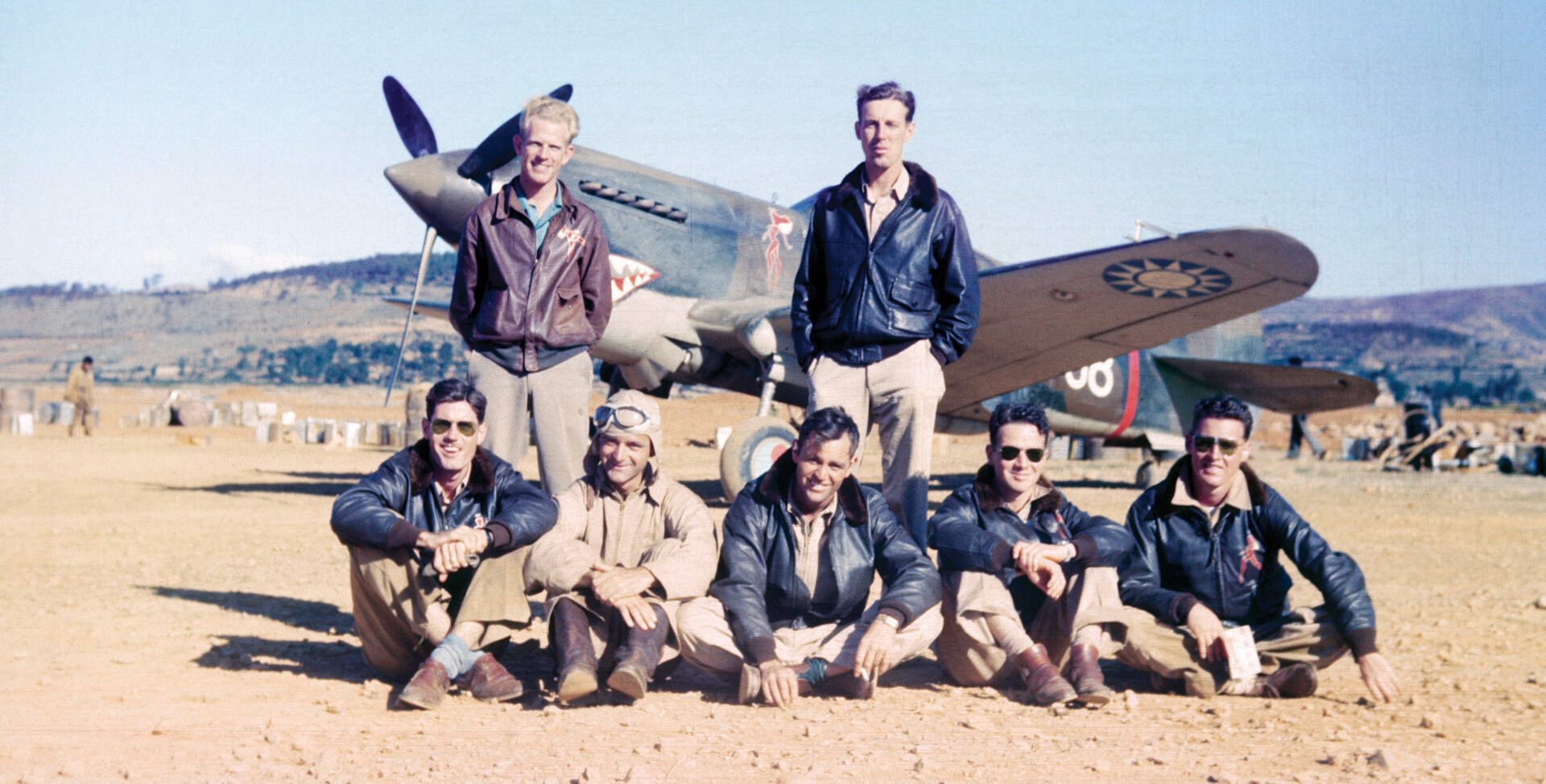
The Demons took off immediately for Lashio, closer to the Burma border with China. They would refuel there and get some maps they couldn’t find in Toungoo. There were no radios for the Demons at Toungoo, but perhaps there would be at Lashio. Shilling had flown to Kunming before, but because of cloud cover saw little of the terrain they passed over. Neither Merrit nor Mangleburg had ever flown the Kunming route; they had no idea of the course or the terrain they would fly over.
Shilling’s Demon started backfiring, but the problem seemed intermittent. The fuel taken on in Toungoo was 100/130 octane—all that was available—but the CW-21 manual specified 80/87 octane. After landing at Lashio, Shilling found a CAMCO representative, who said that the wrong octane could be the problem. Shilling defueled the three airplanes and fueled them with proper octane gasoline.
Shilling’s next stop was at Operations Control, to get the proper charts that covered the route from Lashio to Kunming. What he was given were mimeographed pencil drawings showing the course—60 degrees—and the distance—330 miles—as well as squiggly lines representing rivers and a wavy line representing the Burma Road. That’s the only map there was. There were also no radios available for the Demons.
While Shilling waited for his aircraft to be fueled, Lacy took off and started performing aerobatics over the field. He was obviously having a good time, but with drop tanks full of fuel it was not a good idea. And then the air raid sirens started to wail. With no radios, there was no way to warn Lacy. Shilling’s only option was to get in the air and lead him away. If there were incoming Japanese, the Demons could outrun them. As Shilling and Merrit took off, Lacy dove down to join them. Erik set the course for Kunming.
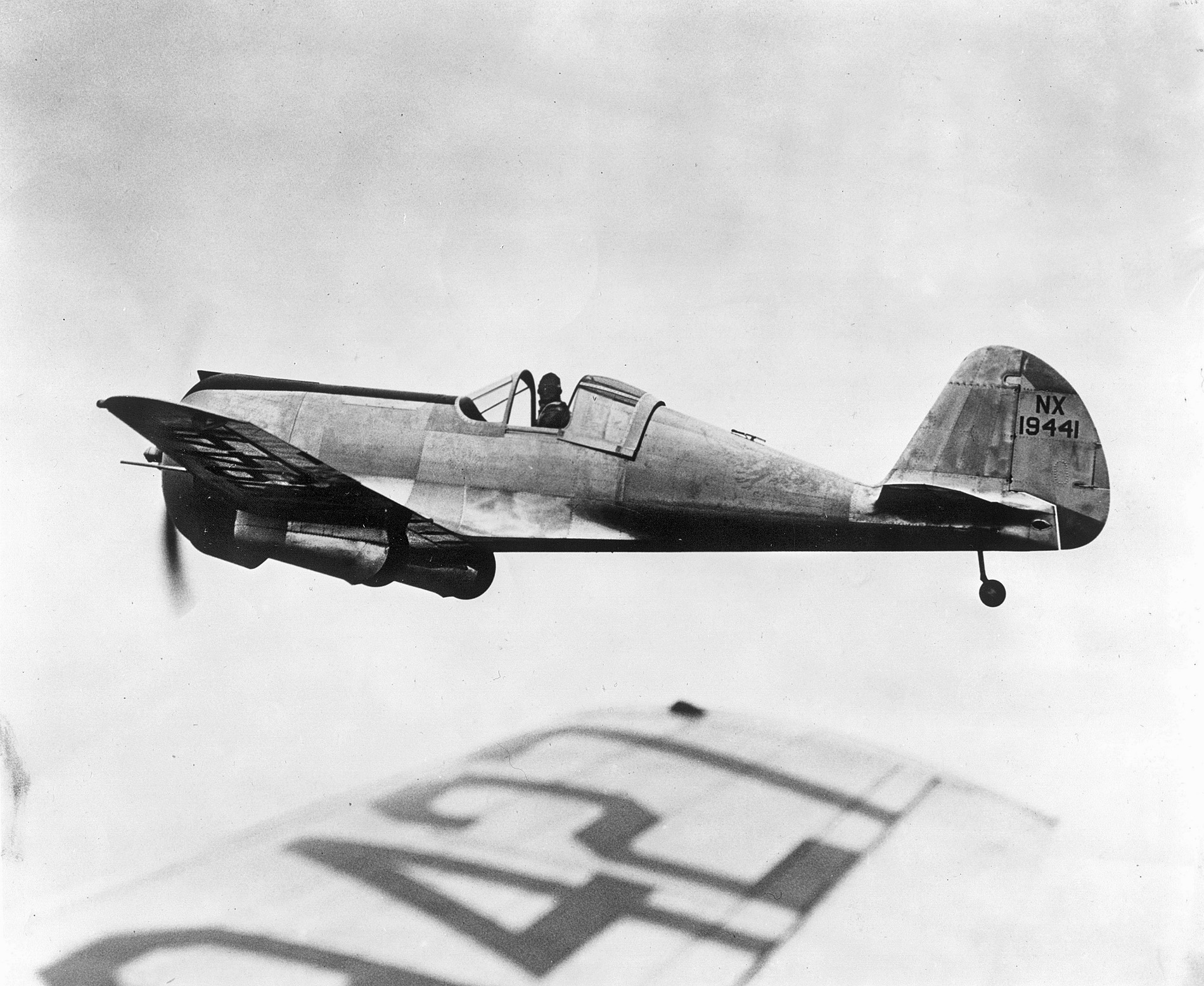
The weather was perfect—for a time. Then the ceiling lowered, and it started to drizzle. An hour into the flight, Shilling’s engine started to backfire again and lose power. He had started looking for a place to set down among Yunnan’s steep hills and deep valleys when he spotted a China National Aviation Corporation (CNAC) transport climbing out, about a quarter of a mile away. The only airfield in that vast mountainous area was at Kunming, their destination. They had to be very near. If he could get Merrit and Mangleburg to see the CNAC transport, they would know their position and be able to find Kunming.
Shilling made a 180-degree turn to get on the transport’s tail, but his sick engine would not let him catch up. He rocked his wings to try to get his wingmen’s attention. If they saw the transport, they would understand the message: “Fly the reciprocal of the CNAC plane’s course and you will be at Kunming.” Mangleburg nodded, so perhaps he understood.
Shilling turned back on the course for Kunming, but his engine was running really rough, and he was losing altitude quickly. He would have to bail out or crash-land. He spotted a small clearing on the side of a mountain and decided to try for it.
His descent was too steep; he was at well over 150 miles per hour when he reached the clearing. But the speed saved him. He was able to pull the Demon’s nose up and mush into the trees. As he hit the first tree, he got a glimpse of the airspeed indicator. “The needle was sitting exactly on one hundred mph,” he noted. Erik didn’t think he ever lost consciousness as he was tossed violently around the cockpit.
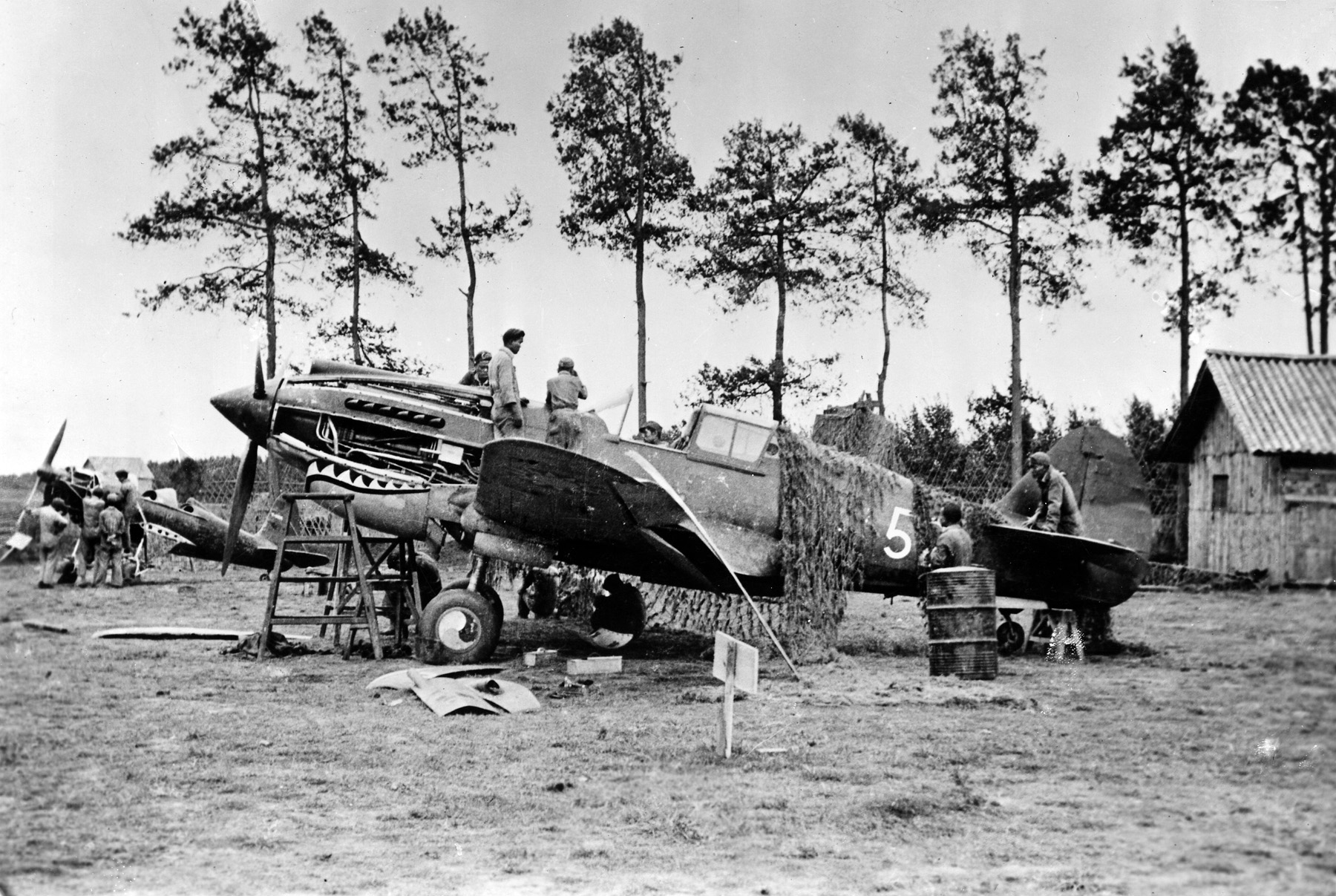
Later, he surveyed the path the Demon had cut through the forest and understood what had happened. The Demon’s left wing had been sheared off at the root by the first tree it hit, and the airplane was slewed sideways. The next tree hit the Demon’s side behind the cockpit, and the impact all but tore the plane in two. It broke the battery cables, which reduced the possibility of a fire. The fuel tanks had ruptured; the ground around the airplane was drenched with aviation fuel.
The thought of fire made Erik scramble from the cockpit and run. Without thinking, he half-ran, half-slid down the mountainside until he reached the clearing where he had wanted to land. He saw Mangleburg circling just above the trees and waved at him. On his next pass, Mangleburg rolled back his canopy and dropped his pistol. Shilling heard it hit in the bushes but couldn’t find it. At Lashio, concerned about his engine problems, Shilling had told Mangleburg that he had no side arm. If he went down, he’d asked Lacy to throw him his pistol. Lacy remembered and obliged.
Shilling spent that first night in the Demon’s twisted cockpit. He didn’t want to do that—the ground around the airplane was saturated with gasoline—but it was either that or sitting in the open and listening to the strange sounds among the trees. He rose with the dawn and was lapping up moisture that had collected overnight in crevasses in the Demon’s now-wrinkled skin when the first of the hill-tribe people arrived. That second night he spent with the Demon inside the newly built stockade. The tribal people hunkered down nearby and started a bonfire. Later, Shilling learned there were dangerous animals in the mountains that surrounded them, the reason the bonfire was kept going all night.
Shilling awoke on Christmas Day wondering how he was going to get off the mountain. The tribal people were busy chopping at trees again, but now they were friendly. They picked up the personal things he had pulled from the wreckage and packed them in pieces of cloth cut from his parachute. Then they build a chair from tree branches lashed together with parachute lines. They insisted Erik sit, and argued over who would be the first to carry him. The mountain was steep and the trail narrow. From his perch, Erik looked down into deep gorges and hoped his porters didn’t stumble. At dusk they arrived at a village far down the mountain. Erik was led to the dwelling, where a Chinese radio operator lived. The radioman didn’t speak English, but he had a Chinese-English dictionary. With that, Erik was able to piece together what had happened.
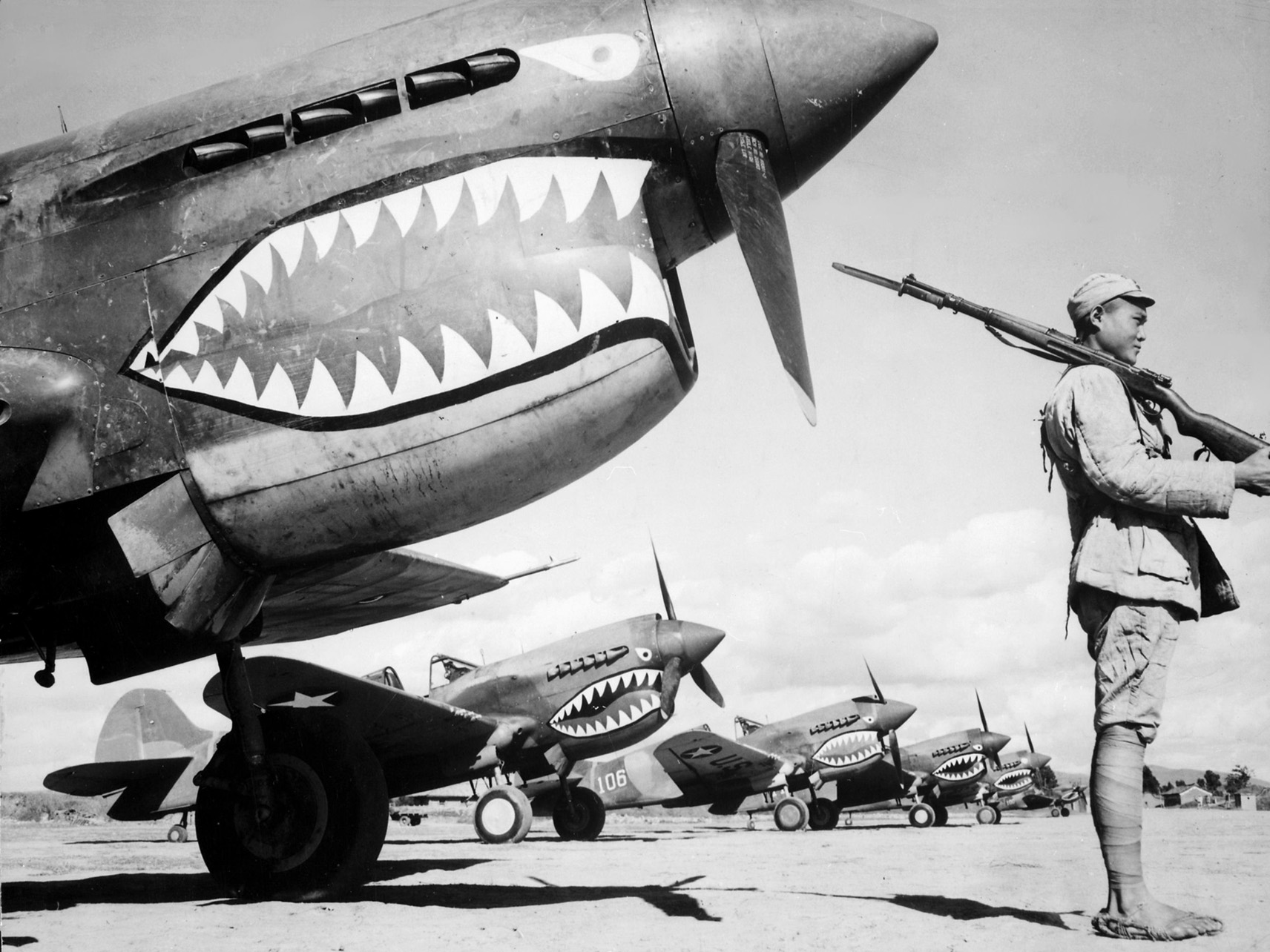
Erik had been saved by Chennault’s air warning net, which stretched out from Kunming in concentric circles like a spider web to little villages where men with radios watched the skies for incoming Japanese aircraft. The net proved helpful in other ways: guiding lost pilots and search and rescue. The people who found Erik initially thought he was a downed Japanese pilot, who were often killed where they were found. The village radio operator heard the Demons fly over and reported it to Kunming. When the three Demons did not arrive at Kunming, the warning net was alerted to be on the lookout for a downed AVG pilots. The group that found Erik eventually got the word. Erik also learned that the other two Demons had crashed. One pilot was killed, but he did not know which one.
On the afternoon of the next day, and much further down the mountain, Erik was met by a group of Americans, among them the AVG’s Doc Rich and Ken Merrit. So, it was Mangleburg who was killed. He had tried landing in a streambed but hit a hill, and the Demon immediately burst into flames. Merrit had made a belly landing on flatter ground and walked away from it. After Shilling went down, the two pilots were hopelessly lost and flew around aimlessly. Neither had seen the CNAC transport. One village on the warning net reported that the two aircraft flew over it more than 20 times. But with no radios in the Demons, the situation was hopeless.
Shilling learned almost all of that later. He and Merrit were given little opportunity to talk. Shilling was taken to a small grass airstrip where a two-seat trainer was waiting to fly him to Kunming as soon as he arrived. Shilling did not realize it until the next day, but he was under investigation by AVG management. Chennault was in Chungking, and in his absence AVG Executive Officer Harvey Greenlaw was in charge. A martinet among the easygoing AVG pilots, Greenlaw decided to immediately convene an accident investigation board composed of the AVG doctor, two pilots, and a mechanic. Greenlaw sent Merrit to Rangoon before Shilling had a chance to talk with him and drew up the charges against Shilling.
The findings were ready for Chennault’s signature when Shilling returned from Chunking: full responsibility for the crash of three airplanes fell on him. He had allowed Mangleburg to perform aerobatics over Lashio, and those aerobatics were the direct cause of the three aircraft crashing. In addition, Shilling had not provided his wingmen adequate maps and had not adequately briefed them. The board recommended that Shilling be reduced in rank from flight leader to wingman and fined $300. When Chennault returned from Chungking, he signed the findings. Shilling officially appealed and presented his written objections. Chennault ordered a complete review of the accident and rescinded Shilling’s fine and reduction in rank.
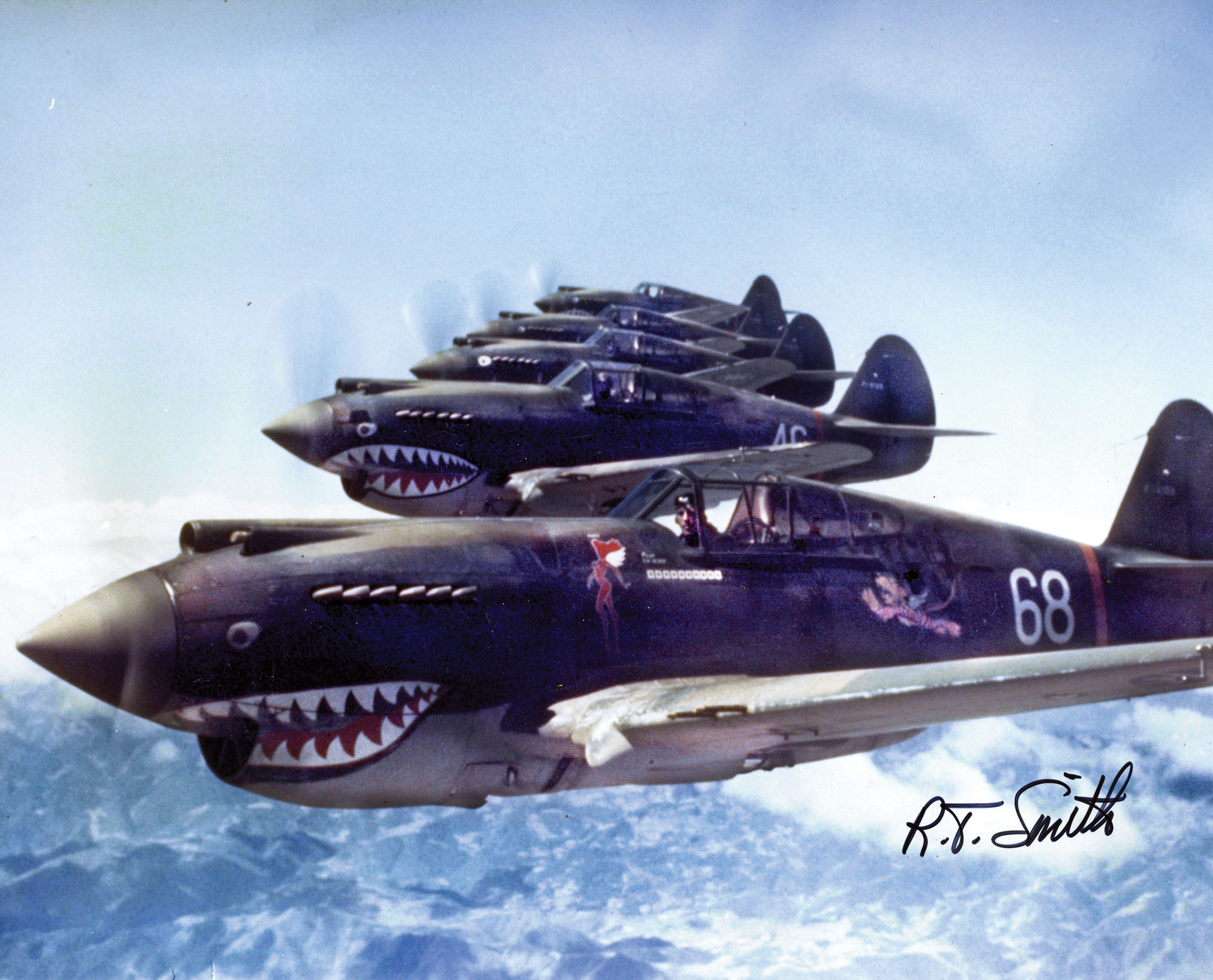
Shilling had many more adventures with the AVG. When the group was disbanded, he joined 16 other AVG pilots at CNAC and made 350 highly dangerous flights over the Hump. After the war he joined Chennault’s new airline, Civil Air Transport (CAT), which was also used to support the Nationalist Chinese in their war against the Chinese Communists. During the Korean War, he made clandestine flights over China, and later in Vietnam he dropped supplies to the French at Dien Bien Phu. Shilling remained an active pilot long after his retirement, particularly as a flight instructor specializing in aerobatics. He wrote an autobiography, Destiny: A Flying Tiger Remembers. He died in 2002.
The saga of the Curtiss Wright CW-21 Demon was over. Most, if not all, of the 30 assembled for the Chinese government at CAMCO’s Loi Wing plant were apparently destroyed by Japanese bombers. The only other customer for the Demon, the Dutch government, purchased 24 CW-21B model Demons, which were sent to the Dutch East Indies in 1941 and assembled at Bandung, Java. Several victories against Japanese aircraft were claimed by Dutch CW-21B pilots early in their encounters with the Japanese, but most of the East Indies Demons were very quickly lost in combat or destroyed on the ground.
The Japanese apparently captured one Demon intact. No Demons seem to have survived the war, and none are known to exist today. The Demon had an impressive performance that came at the cost of lightweight but flimsy construction. Also, to save weight and improve performance, the CW-21 was given no armor for pilot protection and had no self-sealing fuel tanks. It had been designed as a high-performance interceptor of bombers that was not intended to dogfight, but to use its superior speed to escape opposing fighters.
In the end, that and a lot of bad luck spelled the end of Erik Shilling’s “beautiful little fighter plane.”
Author Bob Bergin, a former U.S. Foreign Service officer, writes on the history of aviation in Southeast Asia and China and on intelligence and military operations in the World War II China-Burma-India Theater.
